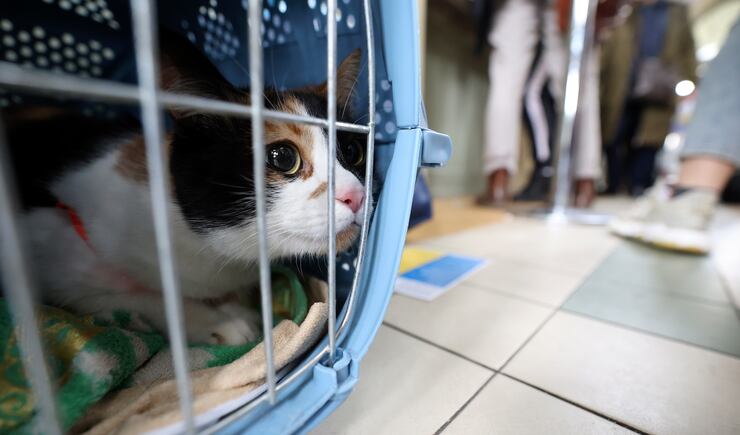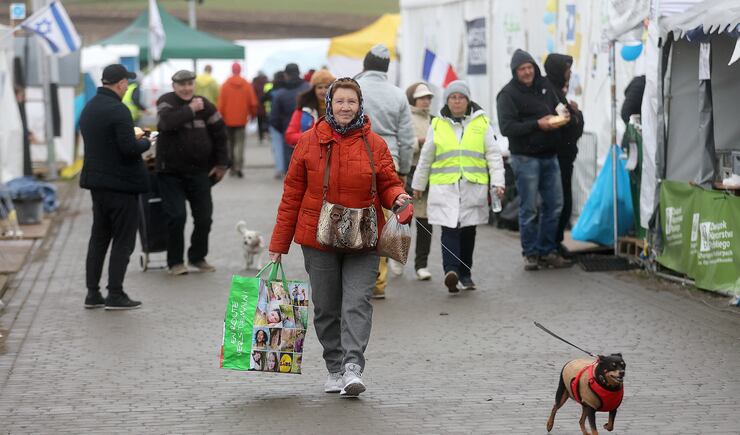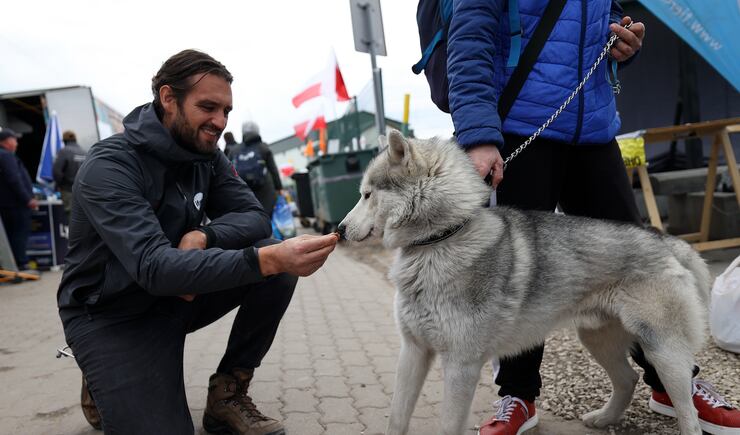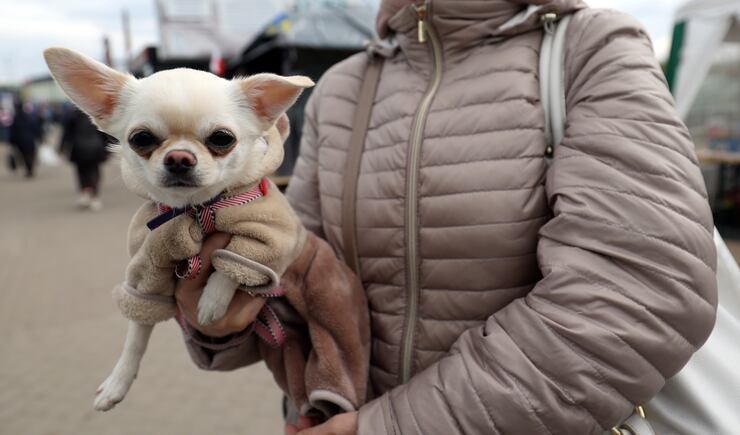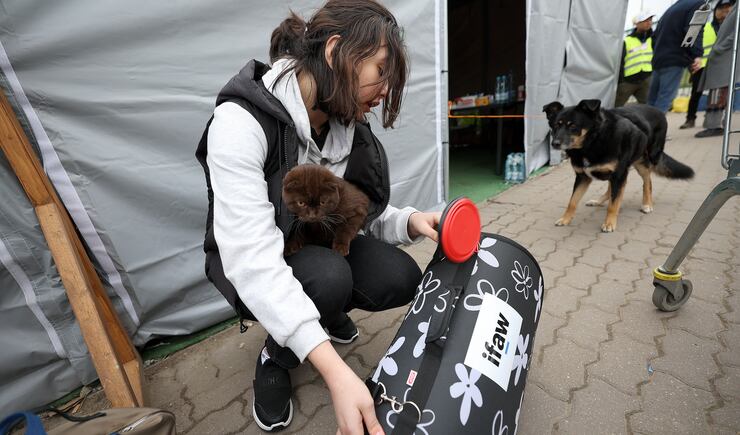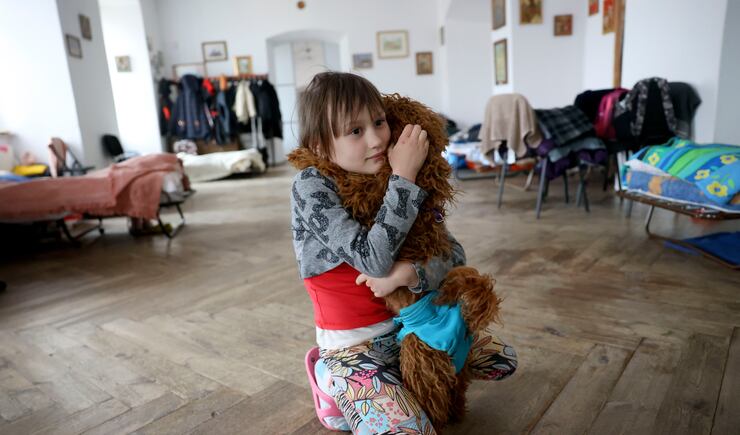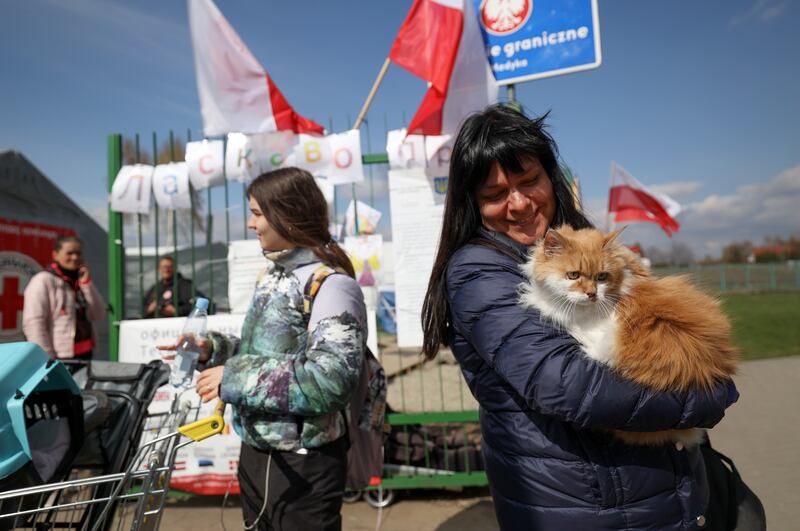Editor’s note: Deseret News journalist Kyle Dunphey and photojournalist Kristin Murphy traveled to the border of Ukraine in Poland and surrounding countries to view the impact of the refugee crisis. This is the fifth of several dispatches from the border.
At a busy checkpoint along the Ukrainian border in southeast Poland, the cats come in waves.
There are cats in crates, cats in purses, cats in plastic bags, cats in cardboard boxes and cats in pet carriers. There are plenty of dogs, too, and the occasional parrot, hamster, mouse, snake or turtle. One boy walked across the Polish border with a lizard underneath his shirt, hiding it from the guards and squirming as it crawled across his chest.
There was even a rooster that a family brought with them as they stayed at a nearby grocery store-turned-refugee center.
“He was so very loud,” said Karolina Butkiewicz, the center’s coordinator, rolling her eyes. “Yes, I was not sad to see him go.”
The war upended life for millions of people, and their animals. It’s impossible to know how many pets have escaped Ukraine alongside their owners. Sources vary, but Ukraine was home to anywhere between 5.5 to 7.5 million cats, and at least 750,000 dogs.
As refugees cope with the trauma of war, caring for their pets is therapy. The chores — feeding, walking, playing — are essential to the mental well-being of the owner. Sometimes a pet is the only thing they take from home. For many Ukrainians, it reminds them of a time before tanks and missiles.
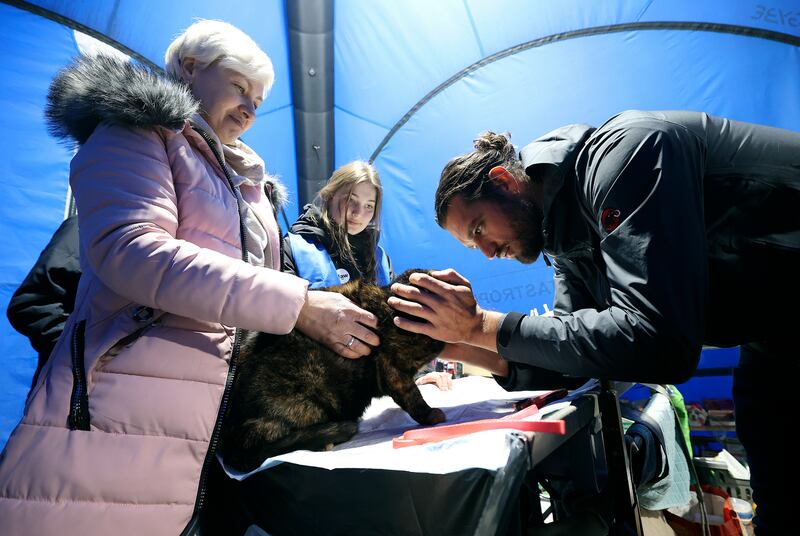
“The amount of comfort that the animals are bringing their owners, you just can’t compare it to anything,” said Andrew Kushnir, a veterinarian with the International Fund for Animal Welfare, or IFAW, who spent much of the early months of the war stationed along the Ukraine-Poland border.
Standing at the bustling border crossing of Medyka, or the train stations of Przemysl or Krakow, it’s stunning how many cats, dogs and other animals accompany Ukrainian women and children as they navigate life in Poland.
“We brought Barney all the way from Kyiv,” said Diana Sinitsa, 14, speaking through a translator just minutes after she walked across the border with her family. A moody, 1-year-old brown cat, Barney hissed at volunteers peering into the black carrier.
“Yes, you’re happy to be (in Poland),” she said to Barney, taking him out of the carrier.
The family, Barney included, is headed for Italy. But their first stop now that they’re in Poland is the sprawling blue tent run by IFAW just across the border in Medyka.
“It’s beautiful to see. These folks fled their country, the city where their homes were being bombed, they make the journey all the way across Ukraine, then they make the journey across the border, which can take hours — and their biggest priority is making sure their cat pees,” said Kushnir.
Originally from San Diego, Kushnir has been working in Medyka since the early days of the war. Going on year four of being a veterinarian, it’s his first time doing any kind of disaster relief or humanitarian work.
“I had no choice,” said Kushnir, whose father is a Ukrainian refugee who fled home as a child in World War II. As the Russian invasion unraveled in February, he started contacting every organization that was on the ground helping animals. IFAW, which has several tents set up in Poland, responded and he soon found himself in Eastern Europe.
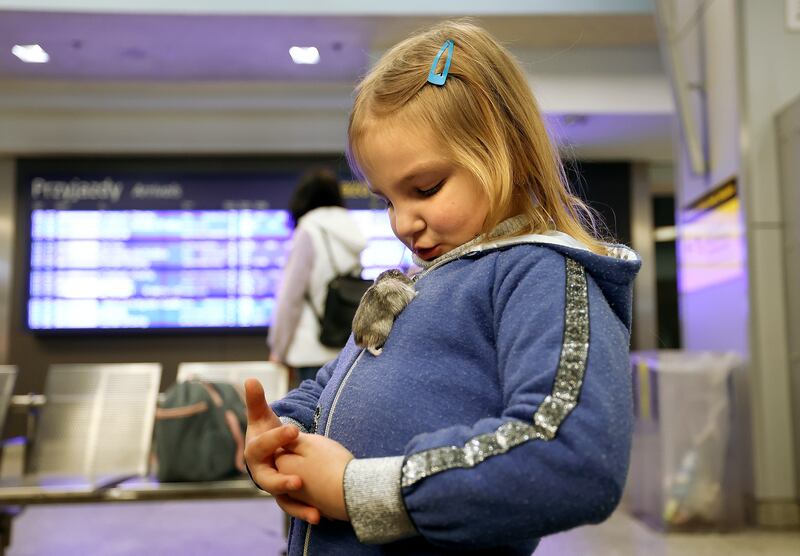
“Every time I see one of these families, like a little child and a mom, I see part of myself. I see my father, for sure,” he said, seeking refuge as rain pelted the IFAW tent. Inside, the shelves are stacked high with medication, carriers, leashes, food and more. It’s all free for the refugees, as are Kushnir’s services.
The animals have rarely eaten enough food, he says. Sometimes they’re injured, constipated or have fleas. Plenty of refugees stop into the tent even if nothing is wrong, just to get some reassurance.
“When I let them know I’m a vet, or our translator lets them know, they are super appreciative, they just want to know that their animal is OK. I can give them some peace of mind that their animal is going to be OK,” he said.
Like the woman who, a day before Kushnir talked with the Deseret News, walked across the border with her dog. Before she crossed, she said goodbye to her husband who was too young to leave Ukraine because men between 18-60 years old are conscripted to fight.
“She was very distressed,” said Mickaelel Farhi, a French volunteer who helped the woman across. “So we took her dog (to the vet) and make sure everything was OK ... it was huge for her, a huge relief.”
Some of the most distressing images and stories from the war have involved pets. In one of the first reports of Russians targeting civilians, a German shepherd was found in a ditch, cowering alongside what is presumably the body of its owner. As troops withdrew from Kyiv, one official accused Russians of shooting dogs, goats and horses for fun. When they pulled back from nearby Borodyanka, over 300 dogs were found dead at an animal shelter. A young girl, sitting in the back seat of a car with her mother in the front, was shot and wounded by Russians as they fled, unable to take cover because of the crate, which carried her cat, in her lap.
Yet the stories of Ukraine’s animals have provided much-needed relief as the world is inundated with gore and heartbreak from the Russian invasion. One man walked over 100 miles with his 9-year-old mongrel terrier. Others stayed behind as Russians encroached — “I am cooking food for the dogs ... the neighbors on the next street over have fled and someone has to feed (them),” one woman told The New York Times.
The Twitter page “Ukrainian Army Cats and Dogs” has ballooned to 47,000 followers. Nearly every Ukrainian platoon seemingly has a pet dog, or cat — sometimes they’re more than just a mascot, too, like Patron, the small dog who had the honor of meeting with Canadian Prime Minister Justin Trudeau during his visit to Ukraine.
The war has created an unprecedented humanitarian crisis, as over 6 million people have left Ukraine, according to the United Nations. Roughly 3.2 million are in Poland, and the country has had to bend rules and laws to facilitate their resettlement — for both humans and animals.
For years, pets brought into the country were required to receive vaccinations and a microchip from a Polish vet. But in the roughly three months since the war began, Polish veterinarians were so overwhelmed that authorities rescinded the rule, allowing foreign vets to administer vaccines and microchips.
In Poland, the early weeks of the Russian invasion were chaos, Kushnir says, with as many as 100 animals coming through the tent every day. Things have slowed down since, but they still take in anywhere from 30 to 50 pets daily.
“Let’s say some catastrophic event happened in Los Angeles, and people had to leave. Absolutely we’d bring animals, animals are part of our family. They’re not generally high on the disaster relief response, because most resources obviously have to go to people or the war effort. But some people, like myself, find their niche in animals. We’re not just helping animals, we’re helping people who have their animals,” he said.
There’s never a dull moment, and Kushnir peeled away from his interview several times as volunteers ran into the tent asking for a crate, a leash or dog food. He cleared off his table as a woman from Mariupol brought in a crate with five puppies just a month old, their eyes barely open.
“Oh my gosh, these guys are cute,” he said, as their owner, whose city is now in ruins, held one of the puppies in her palm, and smiled.
